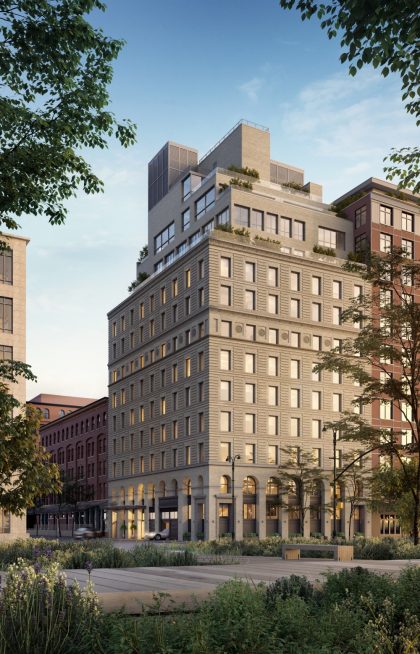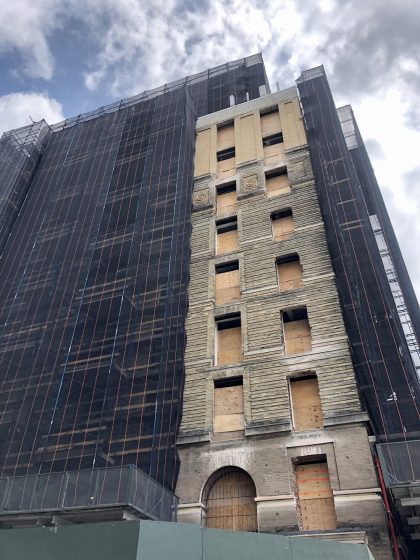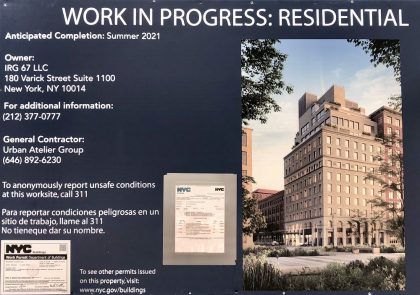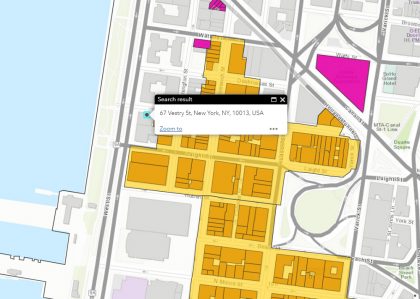Plans for 67 Vestry finally revealed
The saga of 67 Vestry is finally wrapping up — with renderings released and a plan for the building — a total of 13 units only, according the marketing plans.
Iliad Realty Group is the developer, and their involvement started a couple years back, when they bought it from developer Aby Rosen in 2017 for $55 million. Rosen let the building fall into disrepair, but the tenants held on, eventually all taking buyouts except for one, who moved out in March 2019 to an apartment provided by the developer. She will be moved back into her old apartment, half a floor, when the building is completed in 2021.
Department of Buildings filings show that there will in fact be 15 units in total (there were 23) across 13 floors (the original building has nine). The total height is going from 115 to 153 — you can see the set back floors in the renderings. There’s also a lap pool.
The building was designed in 1896 by architect F.P. Dinkelberg (who also designed the Flatiron Building) as a “tea and coffee” warehouse for the Great Atlantic and Pacific Tea Company — aka the A&P, which eventually became the grocery chain until 1990. The building was then used as artist’s lofts. Residents of the building, who in 2014 led an unsuccessful effort to landmark it, compiled this historic description:
“From the circa 1900 photo of the building (Collections of the Museum of the City of New York), the new A&P warehouse is a handsome palazzo with two-story Romanesque openings for the loading docks, and an extremely fine iron cornice. Its pale brick adds a touch of lightness as to the oversized ground floor windows. The small iron balconies on the east side add an unexpected flourish (they are since removed). It’s thick walls and striated brick patterning convey a hint of medieval fortress, a safe place to store food, come hell or high water.
In 1910 the building’s new owner hired Frank J. Helmle, of the firm McKim, Meade & White, for the addition of two floors.
The building was used as artist lofts in the late 1960s and 1970s and was the first to be given a legal certificate of occupancy for residential use in 1977. The 1970s in fact began a new chapter for the building as home and backdrop to internationally recognized artists and composers. It was clearly one of several key centers of Tribeca’s rebirth through art after the destabilization of the neighborhood and massive destruction of the Washington Street Urban Renewal Plan. The sculptor Marisol lived and worked here, as did John Chamberlain, and Robert Wilson (director, sculptor collaborator with Philip Glass on Einstein on the Beach). Wim Wenders filmed part of An American Friend here. Laurie Anderson used it as a backdrop for her album Big Science. The Dia Arts Foundation got its start here.”
(I will definitely ask around about that last story…)






















I will be very surprised if this is completed before 2025